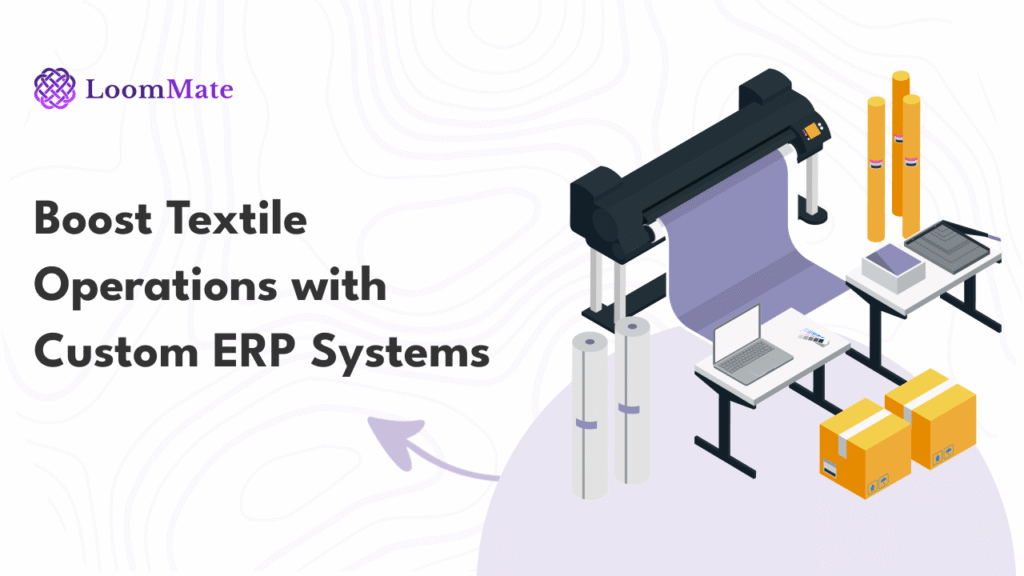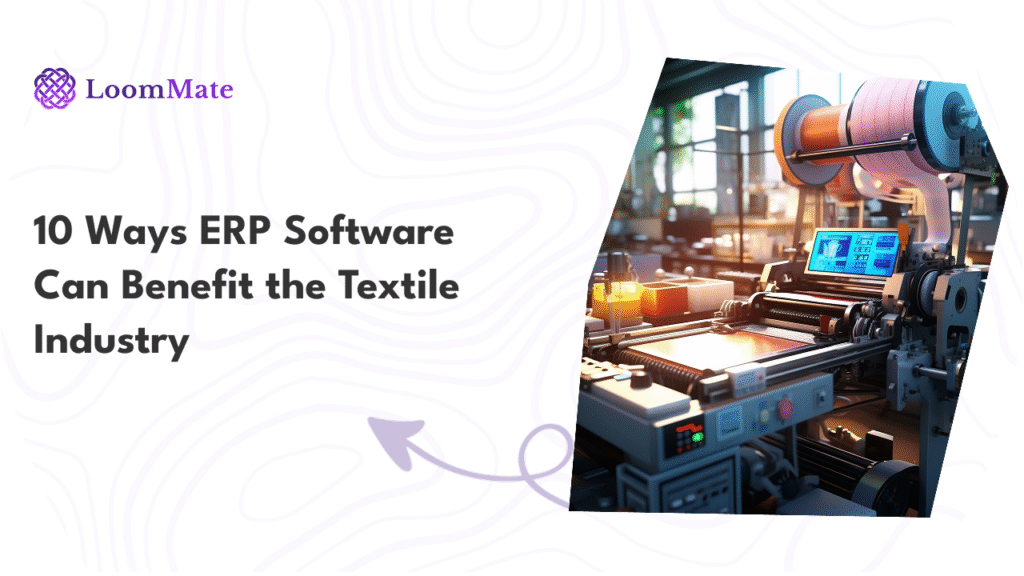Introduction
In today’s competitive textile market, businesses have to constantly handle manufacturing, stock, billing, and fulfill client needs on time. For controlling daily textile operations, conventional methods like spreadsheets or disconnected systems are no longer efficient. ERP (Enterprise Resource Planning) systems can be helpful in this situation.
A Custom ERP system has been created to meet the specific needs of a textile company. During the whole production cycle it improves efficiency, reduces errors, and organizes processes. Textile businesses that choose to use outdated or manual procedures run a risk of falling behind as technology and technology become more and more common.
This article explains the meaning of a customized ERP solution for modern textile businesses along with how it improves decision-making and operations.
What Is an ERP System in the Textile Industry?
A software program called an ERP system organizes all of a business’s essential activities into one system. For businesses in the textile industry, this includes:
- Inventory management
- Production planning
- Sales and purchase order management
- Financial tracking
- Supply chain coordination
To manage the unusual processes and problems present in textile manufacturing, dyeing, printing, weaving, and other associated industries, a textile ERP system is developed.
Why Choose a Custom ERP for Textile Business?
1. Every Textile Business Is Different
Each textile unit performs differently based on its size, product kind, and operation. Not every requirement can be satisfied by a pre-made ERP. The method in which your company works informs the design of custom software for the textile industry. The program adjusts to your workflow, not the other way around.
2. Improves Accuracy and Reduces Errors
Errors are common when data is entered by hand. By automating data entry, replenishing inventories in real time, and precisely managing money transactions, a customized ERP reduces these kinds of errors.
3. Centralized Information Access
Custom ERP solutions combine all departments into a single platform, including accounts, production, sales, inventory, and dispatch. This reduces confusion because everybody has access to the same facts.
How ERP Improves Textile Business Operations
ERP software helps simplify and automate textile operations. Here’s how:
1. Better Inventory Management
An important aspect of textile activities is the management of raw materials, completed goods, and waste. ERP reduces outages and overstocking by tracking every movement in real time.
2. Faster Production Planning
A textile production management system schedules out tasks according to deadlines for delivery, raw material availability, and capacity. Order delivery on time and more effective operations are made possible by this.
3. Purchase and Sales Order Tracking
Orders can be tracked from the point of inquiry to delivery. Custom ERP helps improve customer service by updating the status at every stage, including quotation, approval, dispatch, and invoicing.
4. Financial Management and Reports
A customized ERP system handles ledgers, receivables, payables, and GST compliance. By just a single click, business owners can access financial information, facilitating improved financial planning.
5. Improved Quality Control
ERPs for textiles include quality checkpoints at various stages of production. By making sure faults are identified early, labor and customer complaints are reduced.
Read More: 10 Ways ERP Software Can Benefit the Textile Industry | LoomMate
Real-Time Data for Better Decisions
Textile businesses rely on small profit margins. Making decisions more quickly and effectively can be made easier by having access to real-time data. ERP enables you to see:
- Daily production output
- Pending orders
- Available stock
- Profit margins per order
This helps in controlling worker productivity, detecting delays, and keeping costs under control.
Why ERP Is Better Than Spreadsheets or Generic Tools
For very small businesses, using separate billing software or Excel can be effective. However, as the problem grows, many people using different tools frequently results in:
- Data duplication
- Lack of version control
- Miscommunication between departments
Each of these problems are solved by departmental connection and process automation in the top best ERP for the textile industry.
Role of LoomMate in Custom ERP for Textile
LoomMate is one such custom ERP software developed only for the textile industry. From yarn to the shipping of finished fabric, it includes every aspect of the textile business lifecycle. Simple-to-use yet powerful modules for dyeing, weaving, finishing, billing, and e-way invoices are available from LoomMate.
Textile owners can manage orders from any location, work more effectively, and reduce down on approval or reporting delays with LoomMate. Since it has been created for textile workflows, employee education is simple and deployment is faster.
Scalability and Future-Readiness
One key advantage of using custom ERP is its scalability. You can add new features or modules as your textile business grows. The software improves with you, every time how you establish more branches, add additional systems, or move into fresh businesses.
Modern ERP systems include API interfaces, cloud access, and smartphone compatibility. This maintains your ready for future technological advancements.
Key Benefits of Using Textile ERP Solutions
- Real-time production tracking
- Efficient inventory control
- Reduced manual work
- Accurate billing and GST compliance
- Faster order fulfillment
- Better customer relationship management
- Detailed reports for management
These benefits help in improving the overall efficiency and profitability of your business.
Follow Us on: Facebook | Instagram | Pinterest | LinkedIn | Twitter
Implementation Considerations
Before choosing or developing a custom ERP, it’s important to consider:
- The specific needs of your textile unit
- Budget and timeline for implementation
- Training and ease of use for staff
- Data security and backup features
- Vendor support and customization ability
Conclusion
Today’s textile businesses needs to implement digital tools to stay relevant and efficient, pushing beyond manual processes. In spite of helping with day-to-day management, a specific ERP solution promotes long-term business growth.
By using ERP software built for textile needs, companies can reduce errors, speed up deliveries, and improve customer satisfaction. Choosing the best ERP for textile industry means investing in better control, real-time visibility, and smarter decision-making.
Customized features for textile units are provided by solutions like LoomMate, which simplifies and increases the productivity of the digital transition. It has grown essential to have a textile ERP system, no matter whether your company handles yarn, fabric, dyeing, or clothing.
FAQs
Q1. What is the difference between a generic ERP and a textile-specific ERP?
A generic ERP serves all industries, while a textile ERP is built for textile production processes, inventory types, and order handling.
Q2. How long does it take to implement a textile ERP?
On average, it can take 4 to 8 weeks depending on the size of the business and level of customization needed.
Q3. Is a custom ERP expensive?
A custom ERP may cost more upfront than off-the-shelf software, but it offers better returns over time by increasing productivity and reducing errors.
Q4. Will staff need training to use the ERP?
Yes, but most textile ERPs are designed with user-friendly interfaces. Initial training sessions can make employees comfortable quickly.
Q5. Can ERP be used on mobile?
Yes. Most modern textile ERP solutions offer mobile access, allowing business owners to track operations even when not on-site.



